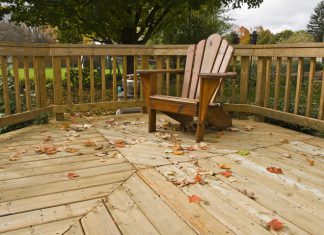Regardless of how big or small your outdoor space is, landscaping can make an impactful difference in terms of its coziness. Moreover, opting for xeriscaping can further increase the landscape’s sustainability, as it presents a smart one-time investment.
If you are looking to breathe rock-solid life into your front yard or backyard, hiring a professional landscaping company could be just what you need. However, with some research, an open mind, and a tinge of creativity, you, too, can stay on top of the landscaping game. After all, what better way to meet your expectations than to know what professional landscaping has in store?
With that in mind, let us have a closer look at how you or a professional landscaping company can use rocks to decorate your outdoor space.
What Types of Rocks are Used in Landscaping?
Depending on the size of your outdoor space and your preferences, you can choose between seven types of rocks to enrich your landscape.
1. Boulder
Boulders are large pieces of stone that come in various colors, shapes, and sizes. The ones on the smaller side are excellent as accent pieces, borders, and water features.
2. Crushed Granite Gravel
With thick texture and large particles, crushed granite gravel is good for creating pathways or decorative transitions in your garden.
3. Decomposed Granite
Decomposed granite will help you achieve a rustic appearance. You can use it around trees, as a ground cover, or for topdressing. Moreover, your garden trails or patio are bound to benefit from its charm as well.
4. Flagstone
As one of the most common stones in the professional landscaping of outdoors, flagstones comprise a variety of rocks. They have a wide range of applications and can be easily cut to fit any mold.
- Limestone
You can decorate your patio or walkway with limestone. If you are looking to hardscape your outdoor area, you should consider using a type of limestone called bluestone.
- Sandstone
Sandstone sports the appearance of compressed sand with its loose grain attributes and coarse texture. It will add a natural look to your landscaped areas.
5. Lava Rock
Lava rocks come in two colors — red and black. They are at the higher end of the landscaping price range and are known to expel warmth amassed during the day once the sun goes down.
6. Pea Gravel
Pea gravel can be used to replace mulch in the slits of your pathways and your garden bed. These small and colorful, rounded rocks can cover your driveway as well.
7. River Rock
In comparison to pea gravel, river rocks are smoother and larger. For this reason, pebbles will add a wonderful touch to a retaining wall or your garden fountain.
What to Take Into Consideration When Landscaping with Rocks
After having decided on which types of rocks to use, you should be ready to make the final call in the landscaping of your outdoor area. To that end, here are some details to keep in mind when landscaping with rocks.
1. Replace the mulch
Mulch is excellent for raising the overall humidity of soil. However, if you have low humidity plants, you should have the mulch replaced with rocks. Not only will the rocks contribute to a cleaner look of your garden, but the soil will also drain more efficiently.
2. Add retaining walls
By opting for a retaining wall, you can increase the planting space and add additional support to the designated areas. This is particularly important to take into consideration if your outdoor area slopes. Besides, adding retaining walls up to two feet is the easiest way to successfully incorporate rocks into your landscaping.
3. Create rock borders
If the smaller ground cover plants are an issue, you can have them grow in preferred patterns by creating rock borders around them. Ultimately, rock borders will prevent undesirable messy plant growth and keep your outdoor area neatly decorated.
4. Make stone pathways
Stone pathways will make your outdoor landscaping look all the better. Experimenting with different types of rocks and spacing can yield beautiful, fairytale-like results. Nonetheless, you should avoid using gravel in your pathways, as its instability may lead to inadvertent injuries.
5. Create patterns with rocks
Do not be afraid to mix and match rocks of different colors. Moreover, strive for contrasting patterns in your landscaping design. You can achieve this by choosing different types of rocks to highlight the desired plants and areas in your outdoor space.
The Smooth Road to Rocky Landscaping
All things considered, there are many ways to approach the idea of incorporating rocks into your landscape. If the budget permits, you can even make bold landscaping statements by adding fountains, feature boulders, or water gardens.
Be that as it may, professional landscaping advice is sure to help you make the right decision. While it is not hard to single-handedly incorporate rocks in the landscaping of smaller outdoor areas, you are likely to benefit from a second opinion.
In the long run, we hope that the newly gleaned knowledge on how to use rocks in your landscape has given you additional ideas to explore!













